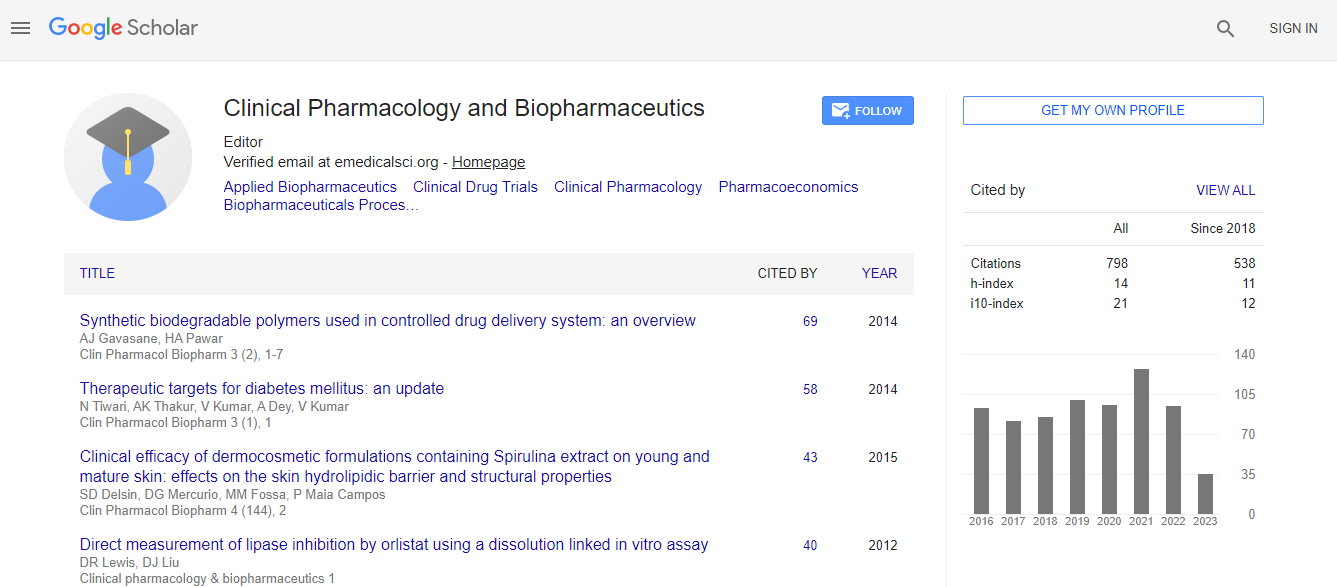Advances in Nanomedicine for Drug Delivery: From Nanoparticles to Nanocarriers in Precision Medicine
*Corresponding Author: Dickson Jabeen, Department of Pharmaceutics and Pharmacy Practice, School of Pharmacy, Muhimbili University of Health and Allied Sciences, Tanzania, Email: dicksonjabeen0990@gmail.comReceived Date: Nov 01, 2024 / Published Date: Nov 29, 2024
Citation: Dickson J (2024) Advances in Nanomedicine for Drug Delivery: From Nanoparticles to Nanocarriers in Precision Medicine Clin Pharmacol Biopharm, 13: 510.
Copyright: © 2024 Dickson J. This is an open-access article distributed under the terms of the Creative Commons Attribution License, which permits unrestricted use, distribution, and reproduction in any medium, provided the original author and source are credited
Abstract
The field of nanomedicine has seen remarkable advancements in drug delivery systems, particularly in the context of precision medicine. Nanoparticles and nanocarriers offer unique properties that enable targeted drug delivery, improved therapeutic efficacy, and reduced side effects. This paper explores the evolution of nanomedicine, from earlystage nanoparticle-based systems to sophisticated nanocarriers designed for personalized treatments. Emphasis is placed on the development of nanomaterials such as liposomes, dendrimers, micelles, and gold nanoparticles, which are engineered to optimize drug release, stability, and biodistribution. The integration of precision medicine principles allows for the customization of therapies based on genetic, phenotypic, and environmental factors, thus enhancing clinical outcomes. The challenges, opportunities, and future directions in advancing nanomedicine for drug delivery are also discussed, focusing on the need for interdisciplinary approaches to realize the full potential of nanotechnology in clinical settings

 Spanish
Spanish  Chinese
Chinese  Russian
Russian  German
German  French
French  Japanese
Japanese  Portuguese
Portuguese  Hindi
Hindi 
